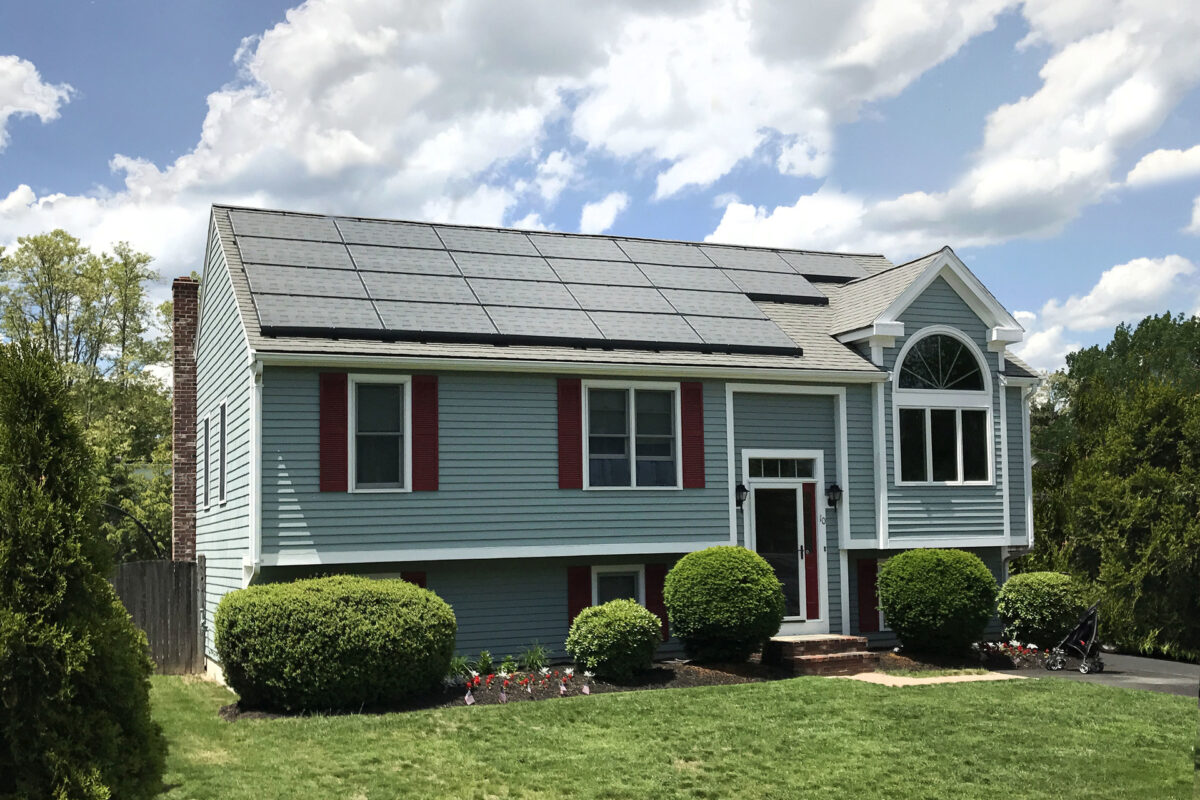Leading the way on cutting carbon dioxide from electric utilities and automobile tailpipes, California has for years provided financial incentives that make clean energy options like electric vehicles and rooftop solar affordable for millions of working- and middle-class families. These families represent by far the largest block of the million-plus California households that installed rooftop solar, according to the Lawrence Berkeley National Laboratory.
But it could soon be lights out for California’s long, consequential record, which has made the state the nation’s leader in fighting the climate crisis with smart, economically savvy policies. State regulators are proposing to undermine the wildly popular solar program.
The California Public Utilities Commission issued a proposal last month that would slash by a whopping 75% the credits any new solar customers would get for surplus energy their rooftop panels generate and sell back to the grid. The credits are the core of the solar program, which helps budget-conscious families keep their monthly electric bills low and defray the upfront costs of installing solar.
As captive California ratepayers see their bills soar, there’s never been a more important time to promote the climate and economic benefits of rooftop solar. If finalized, the credit cut would put solar financially out of reach for those who are hardest hit by high bills.
Nevada regulators adopted a similar plan in 2015, and the state’s once-flourishing rooftop solar market evaporated almost overnight, as detailed in the Environment California report, Rooftop Solar at Risk.
Allowing the solar market in California to tank too would be a disaster for Gov. Gavin Newsom’s ambitious efforts to reduce greenhouse gas emissions and tackle the worst catastrophes of the climate crisis. We’re already seeing them play out in costly and deadly wildfires often sparked by damaged utility transmission lines and historic drought.
Since the state initiated the residential solar program, annual growth has soared by as much as 62% a year. This is a problem for monopoly utilities, which see their profits threatened as more families and small businesses take advantage of the incentives and install solar, the only source of competition the utilities face.
Pacific Gas & Electric and California’s other two investor-owned power companies are behind the proposal to decimate the solar program, which has helped to install more than 1.5 million homes, small businesses, churches, and schools with solar. The clean energy source makes up about 10% of the state’s electricity generation.
The utilities’ efforts to undermine rooftop solar began a decade ago, when the Edison Electric Institute, the main trade and lobby group for the power sector, delivered a presentation before utility executives warning that increased rooftop solar will lead to “declining retail sales,” and a “loss of customers” and could spell “potential obsolescence” for profit-driven utilities. “Industry must prepare an action plan to address the challenges,” it said.
Restricting rooftop solar and its critical role in helping California fight the climate crisis just to boost utilities’ profits would almost certainly lead to a rise in greenhouse gas emissions. That’s because the power companies would need to expand the use of polluting natural gas to make up for the electricity lost with a plunging solar sector.
California has committed to achieving 60% renewable electricity by 2030, 90% zero carbon energy by 2035 and 100% renewable, zero-carbon by 2045. Its own modeling shows roughly the same amount of rooftop solar must be added each year to meet those goals. Other experts believe far more rooftop solar arrays on homes, schools, businesses, and other structures will be needed to meet those emissions reduction targets.
If Governor Newsom wants to protect his pioneering climate legacy, it’s time for him to flex his political power and demand his hand-picked utility commissioners scrap the solar proposal. Instead, they should start over by identifying ways to make it even easier for struggling California households to reap the benefits of the clean energy source. Let’s keep rooftop solar growing and ensure California’s bright environmental leadership shines on.
Ken Cook is president of Environmental Working Group and Laura Deehan is executive director for Environment California.
The views and opinions expressed in this article are the author’s own, and do not necessarily reflect those held by pv magazine.
This content is protected by copyright and may not be reused. If you want to cooperate with us and would like to reuse some of our content, please contact: editors@pv-magazine.com.








“…increased rooftop solar … could spell “potential obsolescence” for profit-driven utilities.” . . . Yes, exactly. And the sooner, the better.
Electricity IS NOT the average household’s major expense after taxes.
The average household earned $87,432 in 2021 before taxes and spent $66,928, according to this BLS survey.
https://www.bankrate.com/banking/savings/average-household-budget/
Significant expenditures were housing, transportation and food. Slightly more than three-quarters of people’s income in 2021 was devoted to living expenses.
Average 2021 household earning and expenditure statistics:
=================
Household earnings $87,431
Total household expenditures $66,928
Housing expenditures $22,624
Transportation expenditures $10,961
Food expenditures $8,289
An overall increase in household expenditures from 2020 of 9.1%
Percent of people’s income devoted to living expenses 76.5%
Area of largest expenditure increase (decrease) Entertainment (22.7%)
…a reduction
Average monthly cost of utilities:
=======================
Electricity $117.46 ($1,410/yr) or just 2.1% of ANNUAL expenditures.
Natural gas $61.69
Water $45.44
Sewer $66.20
Trash $25-$100
=======================
Util SubTot: ~$315 to $390 per month
Undoubtedly the amounts are higher in Cali than the rest of the nation. And like equally expensive Hawaii that ended NEM altogether in 2015 one needs to understand that utilities need profits for investors to invest on order to finance growth.
The alternative is government (aka: taxpayer funded utilities) run utilities and guess what that would end up costing?
Too bad they’re changing rules after the game started, but that’s GubMint 4 ya.
66% of customers favoring solar said it was primarily for Savings, 16% for independence and ONLY 18% for environmental reasons. See Pg-11 of link below:
https://nccleantech.ncsu.edu/wp-content/uploads/2022/01/Q4-21-Solar-Exec-Summary-Final.pdf
In California 88% are non-solar customers fed up with subsidizing costs of well heeled rooftop PV customers. Political blowback is doing what Hawaii did in 2015 by cancelling NEM altogether. Other states are considering similar cutbacks in solar rebates and regulated utility rates that burden ninzsolar customers unfairly. At 1% rooftop PV penetration, no big deal, but 10% in Hawaii and over 12% in CA is when they’ve realized enough is enough.
Consider this… “Electricity users in California spend $216/month on average for electricity. That adds up to $2,592 per year. That’s 28% higher than the national average electric bill of $2,029.”
However…
“The median household income in California is $77,358. The median for the whole of America is $67,521.”
California will end up like Hawaii. The rich will go “off grid” with solar and batteries and the poor will have to share all the utility infrastructure costs alone. Solar companies like Tesla have great off grid systems they sell in Hawaii that will also sell well in California. Without the higher income people paying to the CARE program, where will the money come from for the 37% of the California rate payers that qualify for the 20% CARE discount if everybody with means goes “off-Grid”? Everyone can stay on the grid by having a grid connection and a meter but what if the main disconnect is turned off on all the homes, with off-grid solar systems that run independently all Spring, Summer and Fall? CAISO depends on California’s rooftop solar during those heat waves so until there is a very large increase in other renewables, we could see more Summertime late afternoon power outages on the grid.
Totally agree, Ed.
OK, let us look at the numbers.
It now costs $3.00 per watt for a fully integrated to utility rooftop solar panel system. The system costs, when prorated over 25 years works out to 11 cents per kilo watt hour produced and used by the homeowner if they get to use it all. Under the current NEM 2.0, the homeowner gets a credit for the lower cost energy they produce and place on the grid at Tier 1 and must either buy it back later at either tier 1 or tier 2 prices or lose the credit at “True-up” to the utility for 3 cents per kilo watt hour. The homeowner takes a $27.00 discount on their credit plus the monthly connection fee of $10.00.
Under NEM 3.0 as proposed, the homeowner must give 4 kilo watt hours at tier 1 pricing or $1.04 worth of electricity to get back one kilo watt hour or 26 cents worth of tier 1 electricity later. Since most electricity is purchased at tier 2 in the Wintertime, the 26 cents will only pay for 2/3 of a kilo watt hour at the 35 cent per kilo watt hour rate. If it costs 11 cents per kilo watt hour to produce, the 4 for 1 exchange would be 44 cents of rooftop solar for a 26-cent rooftop solar credit for a net loss of 18 cents on the deal or being paid only 6.5 cents per kilo watt hour for the power.
Not connecting to the grid and producing power only to the home plus owned batteries is much more costly up front and works out to 19 cents per kilo watt hour produced but the homeowner gets to keep everything produced plus can install as little or as much rooftop solar as they want. Being able to install more solar than the utility allows, for grid tied systems, will allow the homeowner to switch over from natural Gas Appliances, heaters and hot water to all electric. keeping the utility in standby mode in the Summer and occasional use in the winter will lower utility bills for both electricity and Natural Gas. The Federal Government is going financial incentives to do just that from now until 2032 so going off grid and producing one’s own power is the way to go if NEM 3.0 is ever implemented.
One more thing. Running a gasoline generator, to power a home, costs less than the discount the utilities are going to demand of connected solar if they take away 75% of the solar credit.
It’s a dirty game on the part of utilities, when so many people are fighting for a green future.
Most folks (98% of the working cksss) are just fighting for a GREENBACKS FUTURE…on their own backs…not wishful thinking from utopia-ites or eco-maniacs.
Hope our crazy Gov’t throwing our loot at a Utopian Green Earth doesn’t bankrupt us all.
$ooooo…be careful what you wish for…
https://www.science.org/content/article/there-mini-ice-age-horizon
Scientists have predicted that Earth is 15 years away from a “mini ice age,” The Telegraph reports.
Using a new model of the sun’s activity, the solar researchers estimate that in the 2030s the movements of two waves of fluids within the star will lead to a 60% reduction in solar activity. The subsequent decline in Northern Hemisphere temperatures would be similar to the freezing conditions seen in Western Europe during the late 17th century, the scientists announced at the 2015 National Astronomy Meeting.
During that time, now known as the Little Ice Age, the Thames River in the United Kingdom froze over for several weeks, which it hasn’t done since.
Scientists still debate what caused the past cooling; possible explanations include a reduction in sunspots or the eruption of four tropical volcanoes that spewed ash and dust into the atmosphere.”